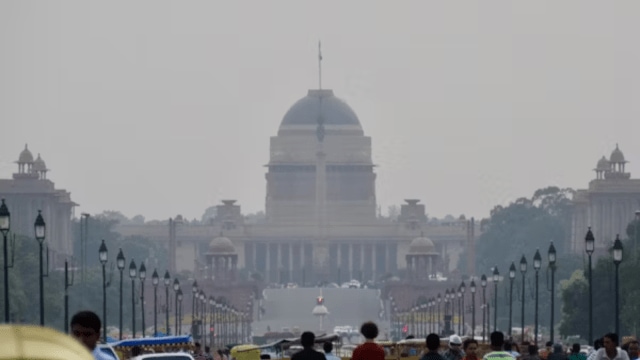
Delhi’s much-anticipated cloud seeding experiment on October 28 failed to produce the desired rainfall, despite the hope that artificial showers could wash away the thick haze choking the city. While disappointment is understandable, this outcome should not come as a surprise. It reinforces what environmental scientists have long maintained: The capital’s pollution problem cannot be dispersed with one-off, high-visibility interventions.
Each year, as autumn fades into winter, Delhi’s skyline turns into a haze of toxic grey. With air quality indices breaching hazardous levels, the pressure to act swiftly intensifies. The latest response: A pilot cloud seeding experiment, aimed to induce rainfall that can temporarily wash pollutants from the atmosphere. While the intent is understandable, it is critical to ask whether such an intervention can truly address Delhi’s deeply entrenched complex air pollution problem.
Cloud seeding is a weather modification technique that involves dispersing substances such as silver iodide or sodium chloride into clouds to encourage rainfall. It has been used in several countries, including China, the United States, and the UAE, mostly to tackle drought or enhance water availability. In India, it has been used intermittently in states such as Maharashtra and Karnataka for similar purposes.
Its use to reduce air pollution, however, remains rare and scientifically inconclusive. While rainfall can temporarily wash away suspended particulates, its effects are short-lived and depend heavily on the presence of suitable clouds, humidity, and wind conditions. Even globally, cloud seeding has offered only localised and temporary improvement in air quality.
Delhi’s pollution pattern is no longer a mystery. It’s a challenge well understood. Decades of research have consistently identified both its sources and its seasonal behaviour. Studies by IIT Delhi, TERI, and the System of Air Quality and Weather Forecasting and Research (SAFAR) have shown that air quality deteriorates sharply in October and November due to a combination of anthropogenic and meteorological factors.
This seasonal inversion coincides with large-scale agricultural residue burning in Punjab and Haryana, while local sources — vehicular emissions, industrial activities, and dust from construction and roads — add to the mix. The science of Delhi’s pollution is clear. Yet, policy responses often take the form of short-term or symbolic measures rather than sustained interventions. In this context, one must ask: Is it prudent to invest in experimental, short-term measures when the sources and solutions are already well known?
Even if the cloud seeding experiment had succeeded, its effect would have been confined to a small area, and for a short duration. Air pollution, however, is a regional phenomenon influenced by emissions from across the National Capital Region (NCR) and neighbouring states and hence localised rain over a few square km cannot solve a regional crisis. Such an experiment, attempted without conducive conditions — very little cloud formation during Delhi’s cold and dry winter months, uncertainties and doubts regarding efficacy, and probable adverse effects of chemicals used for seeding — risks being symbolic rather than scientific
Delhi has, over the years, experimented with various emergency measures from smog towers and anti-smog guns to odd-even vehicle schemes and now artificial rain. While these short-terms fixers reflect a sense of urgency, they often divert attention and resources from the comprehensive, long-term action that is truly required.
Air pollution is a systemic issue, deeply tied to our patterns of energy use, transport systems, waste management, and agricultural practices. It cannot be solved through one-off interventions. What we need instead is effective implementation of existing plans. Short-term “visibility” actions often divert resources and attention from more meaningful interventions such as strict enforcement of emission norms, transition to cleaner fuels and technologies, improved public transport, improving waste management, and better coordination between Delhi and its neighbouring states on issues such as crop residue burning and industrial emissions.
India has the technological and policy tools to tackle air pollution; what is often missing is institutional coordination and sustained execution. Mechanisms such as the Commission for Air Quality Management (CAQM) must be strengthened to enable transparent, data-driven decision-making across state boundaries. Technological innovations and science-led solutions such as low-cost air quality sensors, AI-driven emissions monitoring, and satellite-based forecasting can support these efforts, but they must be embedded within a long-term governance framework.
Delhi’s fight against air pollution is as much about coordinated governance and implementation as it is about science. Unless existing plans are executed with urgency and accountability, even the best scientific innovations will have limited impact.
Cloud seeding may offer symbolic reassurance that something is being done, but it cannot be a substitute for systemic reform. To be fair, cloud seeding does capture public imagination. But Delhi does not need more symbolic gestures. It needs long-term, science-based, and regionally coordinated solutions that address the root causes of air pollution. Clean air must be pursued not as an emergency response, but as a sustained right.
The writer is Director of Air Pollution and Waste Management at iFOREST